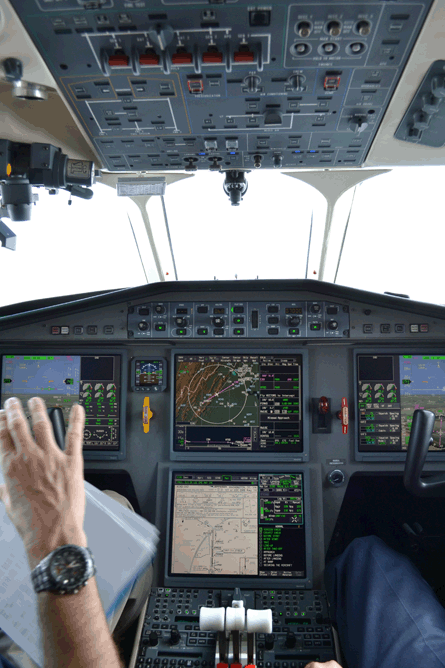Dassault is expecting June European and US certification for its second-generation EASy avionics suite EASy II in the Falcon 900LX, to be followed one year later by approval in the Falcon 2000LX and Falcon 7X.
EASy is based on Honeywell's Primus Epic integrated cockpit, which Honeywell says has accumulated more than four million flight hours.
EASy II's most striking visual difference is the addition of Honeywell's SmartView synthetic vision, which improves situational awareness with a computer-generated 3D view of terrain, obstacles and runways conformal to a pilot's natural eyesight view from the cockpit windows out for 35nm (65km) in front of the aircraft. Information is derived from Honeywell's enhanced ground proximity warning system (EGPWS) database with head-up-type symbology included.
 |
|---|
© Dassault |
The EASy II cockpit features four 13 x 10in (330 x 255mm) DU1310 displays, with tactical information displayed on a primary flight display in front of each pilot and two shared displays for tactical information at the centre of the flightdeck.
In addition to SmartView and the complementary SmartRunway system, EASy II adds satellite-based augmentation systems including required navigation performance (to RNP 0.1) and wde area augmentation system-LPV and ADS-B "out"; XM graphical weather, paperless charts and flight management system improvements including circling approaches and multiple RNAV approaches per runway.
SmartRunway uses the EGPWS database to alert pilots to runway selection errors, potential runway incursions, distance remaining on landing and other safety functions.
New for Dassault with the software-only EASy II upgrade is an automatic descent mode that activates automatically at or above 30,000ft (9,145m) in the event of cabin depressurisation. When a pressurisation red alert is sensed, the autopilot descends to the aircraft to 15,000ft altitude at maximum dive speed.
The addition of SmartView, while initially a situational awareness tool only, could in the near future provide access to lower instrument approach minima through the work of a joint US, European working group. RTCA special committee 213 is preparing guidelines that would allow for reducing category 1 instrument approach minima from 200ft to 150ft or possibly as low as 100ft with the appropriate onboard SVS and crew training.
Debate continues as how the minima will apply based on whether the aircraft is equipped with synthetic vision on a head-up display or in a head-down display. Honeywell maintains that the pilots using the 3:1 compression ratio on HDD conformal view in the EASy II can control "the flight path symbol as precisely in HDD as in the HUD".
Source: Flight Daily News























